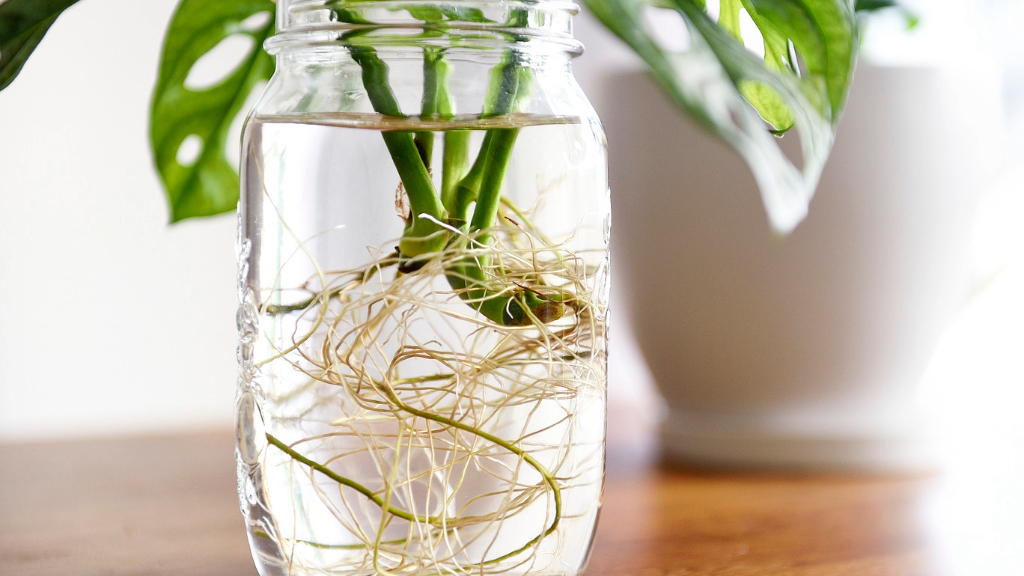Plant Propagation In Water - It's Great For Budding Gardeners


New to gardening? Plant propagation in water is the way to go.
Those who are first learning to garden are often eager to plant anything and everything, myself included. While starting my small garden was exciting, I quickly found that I was also interested in more "advanced" aspects of growing food and flowers. I started saving my own seeds, cross pollinating flowers, and even tried my hand at taking cuttings. As my experience continued to grow, it would become obvious that learning these techniques would have a long-lasting impact on my ability to create beautiful green spaces.
Discovering Plant Propagation Techniques
Reasons for learning more about plant propagation can vary. Many see the mastery of plant propagation techniques as a means to produce an abundant garden with minimal investment. While it is true that propagating your own plants can help create lush gardens on a budget, it's also essential to the continuation of specific plant cultivars and newly created hybrids.
Techniques for plant propagation abound. Since certain methods of propagation may only work on specific species, any grower interested in these must first do some research. For beginning growers, I always suggest propagating plant cuttings in water. Doing so allows gardeners to gain a better understanding of the rooting process. Since only a few materials are required, it is also an ideal way to involve children.
Tips for Propagating Cuttings in Water
Learning to propagate cuttings in water is an excellent way to multiply plants that may not grow true to type from seed, or that may be difficult to germinate. While not all plants will grow roots using this technique, many will. A few that come to mind include pothos, herbs, coleus.
- To begin, simply fill a clean glass jar with water from the tap. Next, take cuttings from the plant you would like to make more of.
- Plant cuttings can vary in length, but should be less than 12 inches (30 cm.) long. Cuttings should only be taken from plants which are healthy, large, and/or sufficiently mature. Carefully, make a clean cut below a set of leaves, making certain not to crush the stem.
- Next, strip away any foliage that will be below the level of water when placed in the jar. Excess foliage in water can cause issues like the growth of bacteria, and may even cause the cutting to rot before it is able to produce roots.
- Place the container of water in a warm location that receives indirect sunlight throughout the day. The time required to develop a root system sufficient for planting depends on the plant type. However, most should begin rooting within one month.
- Rooted cuttings can then be transferred into containers filled with potting soil. Those planning to transplant outdoors will first need to harden off new plants before moving to their final location outdoors.
Gardening tips, videos, info and more delivered right to your inbox!
Sign up for the Gardening Know How newsletter today and receive a free copy of our e-book "How to Grow Delicious Tomatoes".

Tonya Barnett has been gardening for 13 years. Flowers are her passion. She has transformed her backyard into a cut flower garden, which she regularly chronicles on her YouTube channel http://www.youtube.com/@tonyawiththeflowers.
-
 What Is A Pollinator Garden? Grow Gorgeous Blooms While Benefiting Your Local Ecosystem
What Is A Pollinator Garden? Grow Gorgeous Blooms While Benefiting Your Local EcosystemPollinator gardens look great and also provide a diverse ecosystem that benefits your local pollinating insects and animals. Get started today with this guide!
By Bonnie L. Grant
-
 5 Tough Urban Trees That Thrive In Cities – Top Picks For Urban & Suburban Landscapes
5 Tough Urban Trees That Thrive In Cities – Top Picks For Urban & Suburban LandscapesExplore the best urban trees that will add value to even the most challenging of landscapes. Get growing with these ideas and enjoy all the benefits of trees.
By Teo Spengler